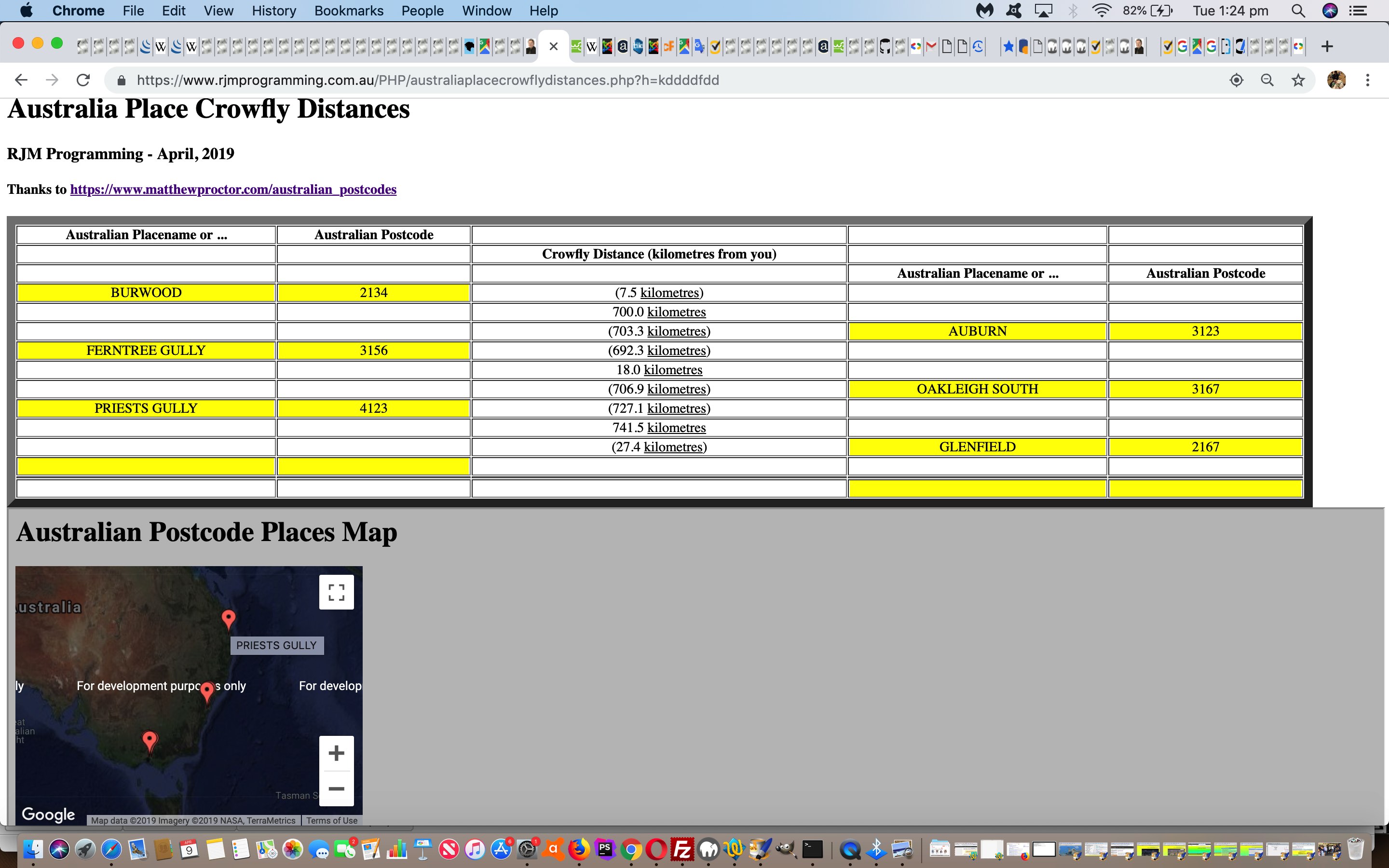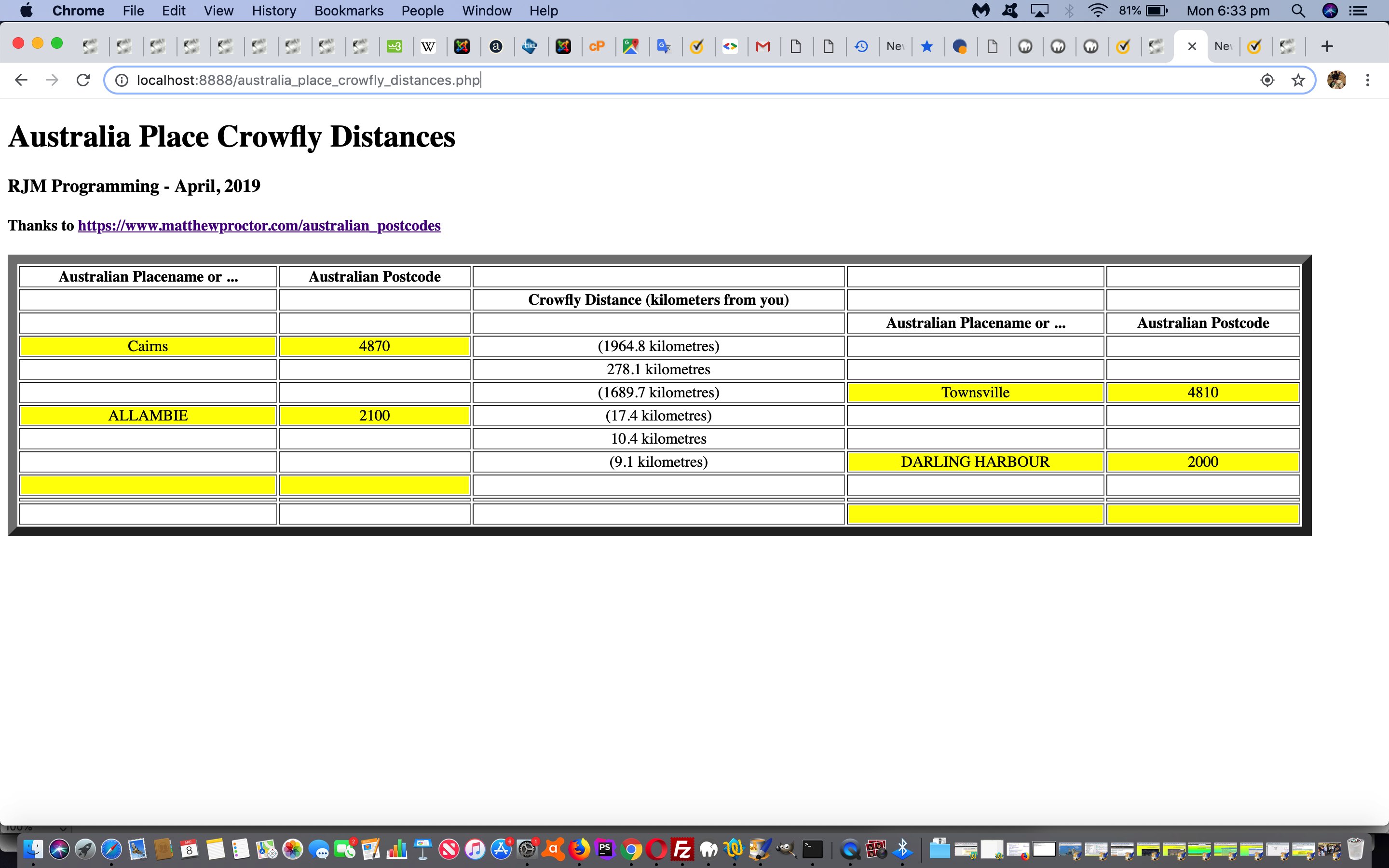Yesterday’s “where of life” themed Australian Postcode Place Distances Primer Tutorial lacked something … anyone, anyone? … yes, Anaximander … a map … and you’d like to swap my horse for one … well okay, there’s one called Ed out the back … but we digress.
Queue the great Google Charts Map Chart (which can transition very easily to Geo Chart, where “from” to “to” lines are drawn) and which can be called in an HTML iframe element to add that visual interest to our changed australia_place_crowfly_distances.php‘s live run link.
There isn’t anything much better than a map to trip plan, or study geography, in our books … but alas we ran out of pamphlettes today … sorrrrrrryyyyyy.
Previous relevant Australian Postcode Place Distances Primer Tutorial is shown below.
It’s time to return to a “where of life” web application tutorial. Why? No, “where”. Who’s on second. But, seriously, the reason is that we found a great Australian Postcode resource for geodata lookups of these Australian placenames or postcodes … thanks.
Combine this …
- Australian postcode (or placename) latitude and longitude … with …
- another Australian postcode (or placename) latitude and longitude … and we can …
- show the user a great circle distance between the two places … as well as a link to …
- Google Maps Directions map between the two places … and there you can imagine we have a bit of a …
- trip planner
… on our hands.
We can add our own client geographical position into the mix via …
function getLocation() {
if (navigator.geolocation) {
try {
navigator.geolocation.getCurrentPosition(showPosition);
setTimeout(later, 2000);
} catch(err) {
setTimeout(later, 2000);
}
} else {
document.getElementById('you').innerHTML='(0,0)';
if (document.getElementById('inlat') && document.getElementById('inlong')) {
document.getElementById('inlat').value=userlatitude;
document.getElementById('inlong').value=userlongitude;
}
if (document.getElementById('ipostcode')) {
document.getElementById('ipostcode').click();
newthree();
}
}
}
function showPosition(position) {
if (userlatitude == 0.0 && userlongitude == 0.0) {
userlatitude=eval('' + position.coords.latitude);
userlongitude=eval('' + position.coords.longitude);
if (document.getElementById('inlat') && document.getElementById('inlong')) {
document.getElementById('inlat').value=userlatitude;
document.getElementById('inlong').value=userlongitude;
}
if (document.getElementById('ipostcode')) {
document.getElementById('ipostcode').click();
newthree();
}
}
}
… that you can see involved in the PHP australia_place_crowfly_distances.php‘s live run link, for your perusal.
If this was interesting you may be interested in this too.
If this was interesting you may be interested in this too.




